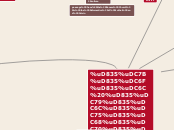POWER AND SOCIETY
UNIVERSE
NATURE AND SUPERNATURAL
OTHERNESS
THE OTHER
MAN AT THE CENTRE OF EVERYTHING
characteristics of the drama
when everything was restored, new innovations were added in the theatre
AGE OF SHAKESPEARE AND GOLDEN AGE OF LITERATURE
1642-1660 these types of theatres were closed
after the Elizabethan tragedies we have the Jacobean's one that broked the order of the universe. In fact in the scene we find cynism and disillusionment
the themes of the tragedies actually are political messages for the audience
now they mix tragic and comic elements, they use conventional costumes and they have conventional acting
the English authors don't follow anymore the ‘𝒕𝒉𝒓𝒆𝒆 𝒖𝒏𝒊𝒕𝒊𝒆𝒔’ of Aristotle
in the Elizabethan court the model used in the theatre was Seneca whose features were : -revenge theme- bloody scenes- use of ghosts- long speeches
the hero has different features from the medieval's one, now :
he is a person from a privileged social position
he is a person from high moral qualites
he accepts the inevitable consequences of his action with courage
the tragedy theatre follows a pattern of five acts :
final outcome with catastrophe
decline
crisis
development
introduction
this type of acting actually includes the catharsis : the purification from all the emotions
the masque : representation characterised by music, dance and song. This was very popular in the Elizabethan court.
the interlude : a dramatic entertainment used to relieve the tension between dramatic acts
𝑰𝑵𝑫𝑰𝑽𝑰𝑫𝑼𝑨𝑳𝑰𝑺𝑴
in this period is very important the individual personality
here, we have the tragedy, namely an imitation of a seroius action. This performance is without narration, because we only have people that talk and make dialogue.
now the important change is that the theatre is for everyone and for all the social classes, because it is a mix of popular entertaiment and refined culture
CLASSICAL
while it takes from the classical the elegance : the authors follow the Greek and Latin culture
this theatre was more difficult to understand, in fact, it wasn't for everyone
MEDIEVAL
it takes from it the moralities and the interludes
this type of theatre was for the middle and poor classes
the drama in this period takes inspiration from medieval and classical genres.
𝑻𝑯𝑬 𝑹𝑬𝑵𝑨𝑰𝑺𝑺𝑨𝑵𝑪𝑬 𝑫𝑹𝑨𝑴𝑨
it is considereted a microcosm living in harmony with the macrocosm all around
ONE OF THE MOST IMPORTANT FIGURE OF THE TIME
THOMAS MORE
he wrote, UTOPIA, a book that talks about an Island where everything is perfect and where happiness reigns
REBIRTH OF LEARNING
PERIOD OF : -PEACE -ECONOMIC POSPERTY -STABILITY
supernatural world with God
earthly world with the King
MACROCOSM
MICROCOSM
so one of the most important thing in this time is the difference between :
LEONARDO DA VINCI : VITRUVIAN MAN
we have the human body as the representation of the universe
passage from the Roman Church to the Reformation of Luther and Calvin
artists inspired by the classical style in fact they follow the Greek and Latin culture
PHILOSOPHY
ART AND ARCHITECTURE
RELIGION
study of human values and potential; it is based on axiomatic truths
new discoveries; we have new methods of research; everything needs to be experimented
𝑻𝑯𝑬 𝑹𝑬𝑵𝑨𝑰𝑺𝑺𝑨𝑵𝑪𝑬 𝑪𝑯𝑰𝑨𝑹𝑨 𝑹𝑨𝑷𝑶𝑵𝑰
perfetto
pronto per orale
perfetto prof, grazie mille
two of the events that changed this period are:
THE PRINTING PRESS
it was introduced by WILLIAM CAXTON
before this the books were written out in longhand
more people could learn to read and write
TUDOR DYNASTY
Henry Tudor also known as Henry VII: he started the dynasty and he defeated king Richard III
his son, Henry VIII, became indipendent from the influencies of the Pope by dividing the Church of England from the one of Rome
Elizabeth I, daughter of Henry VIII, started the Flowering of Renaissance and re-stablished the anglican religion. In her period the english naval power became stronger
we can divide this span of time in three periods :
1485-1558 : the Beginning of the Renaissance 1558-1603 : the Flowering of the Renaissance (also called Elizabethan Era) 1603-1625 : the Decline of the Renaissance (also known as Jacobean Age)
𝑪𝑯𝑨𝑵𝑮𝑬𝑺 𝑰𝑵 𝑻𝑯𝑬 𝑺𝑶𝑪𝑰𝑬𝑻𝒀
SCIENCE

